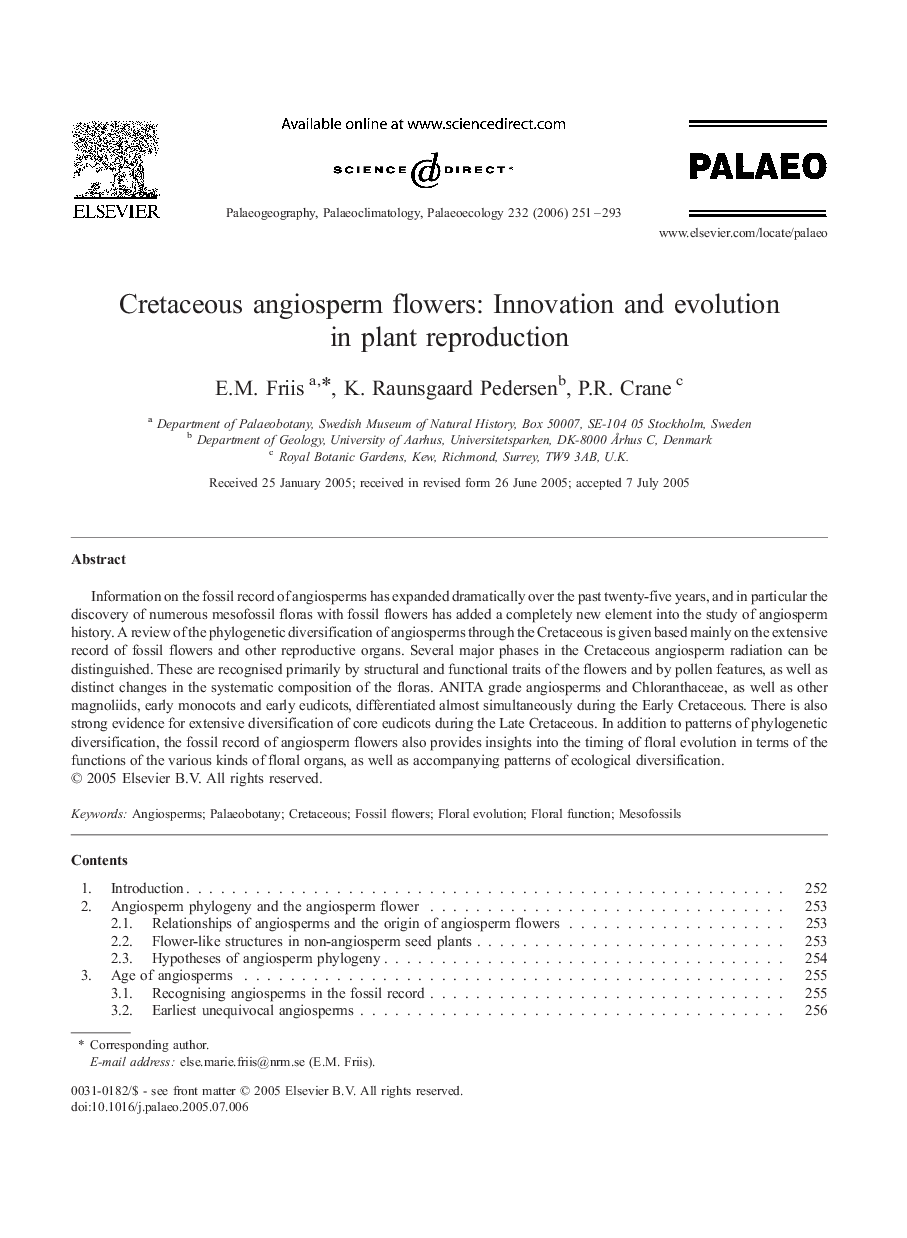| Article ID | Journal | Published Year | Pages | File Type |
|---|---|---|---|---|
| 4469604 | Palaeogeography, Palaeoclimatology, Palaeoecology | 2006 | 43 Pages |
Information on the fossil record of angiosperms has expanded dramatically over the past twenty-five years, and in particular the discovery of numerous mesofossil floras with fossil flowers has added a completely new element into the study of angiosperm history. A review of the phylogenetic diversification of angiosperms through the Cretaceous is given based mainly on the extensive record of fossil flowers and other reproductive organs. Several major phases in the Cretaceous angiosperm radiation can be distinguished. These are recognised primarily by structural and functional traits of the flowers and by pollen features, as well as distinct changes in the systematic composition of the floras. ANITA grade angiosperms and Chloranthaceae, as well as other magnoliids, early monocots and early eudicots, differentiated almost simultaneously during the Early Cretaceous. There is also strong evidence for extensive diversification of core eudicots during the Late Cretaceous. In addition to patterns of phylogenetic diversification, the fossil record of angiosperm flowers also provides insights into the timing of floral evolution in terms of the functions of the various kinds of floral organs, as well as accompanying patterns of ecological diversification.
